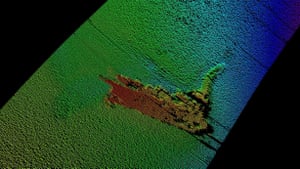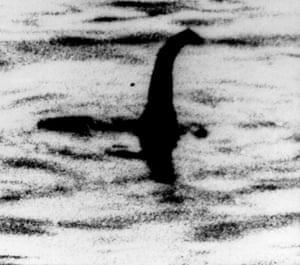A scientific examination of Loch Ness using DNA sampling techniques will try to establish exactly what lives in the UK’s largest freshwater body – it may also discover whether there is any scientific basis to the legend of the Loch Ness monster.
The mission will involve genetic code being extracted from the lake over a two-week period, which will be analysed to determine the types of creatures that live there.
Prof Neil Gemmell, a scientist from New Zealand leading the global team of researchers, said: “I don’t believe in the idea of a monster. But I’m open to the idea that there are things yet to be discovered and not fully understood. Maybe there’s a biological explanation for some of the stories.”

After the team’s trip next month, the samples will be sent to labs in Australia, Denmark, France and New Zealand to be analysed using a genetic database.
“There’s absolutely no doubt that we will find new stuff, and that’s very exciting,” Gemmell said. “While the prospect of looking for evidence of the Loch Ness monster is the hook to this project, there is an extraordinary amount of new knowledge that we will gain from the work about organisms that inhabit Loch Ness.”
Many believe sightings of the “monster” could in fact be a large fish, such as a catfish or sturgeon. Scientists will explore this theory during their investigation.
A local expert and lead researcher on the Loch Ness Project will also join the team. Adrian Shine told reporters in 2017 that the lasting appeal of the legend was that “as the human world shrinks, people tend to look for something bigger than themselves – something frightening, something mysterious or something hidden”.
There was a flurry of excitement among Nessie hunters in 2016 when sonar-imaging revealed something at the bottom of the loch that resembled the shape commonly attributed to the beast.

It transpired, however, that Shine and his team had discovered an abandoned prop from the 1970 film The Private Life of Sherlock Holmes. The 10-metre (30ft) model was discovered 180 metres beneath the surface by a robot, which was surveying the loch.
Stories about the lake concealing a monster date to AD565, with the earliest sighting of a “water beast” reported by an Irish monk.
More than 1,000 people have since claimed to have seen Nessie, which has bolstered the local tourist industry. The nearby village of Drumnadrochit is home to two permanent Loch Ness monster exhibitions.

The development of photography sparked wider interest in the legend, and photographs taken in 1933 and 1934 featured on the front pages of national newspapers.
Since then, scientific examinations – including a 10-year study by the Loch Ness Phenomena Investigation Bureau in the 1960s and 70s – have produced no evidence that the legendary beast exists.
Gemmell, 51, who first visited Loch Ness in his late 20s while on holiday, said: “I’m going into this thinking it’s unlikely there is a monster, but I want to test that hypothesis. What we’ll get is a really nice survey of the biodiversity of Loch Ness.”